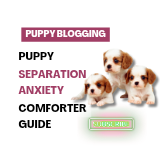The Changing Landscape of Dog Walks in the UK: A Mental Health Concern for Dogs and Owners
- May 15, 2024
- 2 min read
Updated: Feb 5
As a dog trainer and walker in the UK for nearly two full decades, I have seen a huge change in the landscape of dog walking lately and it is not for the better!

In the UK, dog walking has long been a cherished ritual, providing not just exercise for our four-legged friends but also an opportunity for socialisation—both canine and human. Before the COVID-19 pandemic, parks and open spaces were alive with the joyful sounds of dogs playing off-lead, owners sharing stories, and a general sense of community.
Unfortunately, this idyllic scene has shifted in recent years, and the effects are being felt by dogs and their owners alike.
The Shift to On-Lead Walks
Since the pandemic, there’s been a noticeable change in how dogs are walked. Where off-lead play was once the norm in many areas, an increasing number of owners now keep their dogs on leads. Reasons range from heightened caution about dog behaviour to stricter enforcement of leash laws. While safety is essential, this shift has limited opportunities for dogs to engage in natural behaviours such as running freely, playing with other dogs, and exploring their surroundings at their own pace.
For many dogs, these activities are crucial for mental stimulation, stress relief, and confidence building. Without them, dogs can become anxious, frustrated, or under-stimulated. Dogs that once thrived in open spaces now pull anxiously at their leads or react nervously when approached by off-lead dogs. This change not only affects their mental health but can also manifest in behavioural challenges, making walks less enjoyable for both dogs and owners.
The Ripple Effect on Owners’ Wellbeing
Dog walks are more than just a routine chore; they’re an opportunity for connection, relaxation, and physical exercise. Before the pandemic, these outings often served as a social lifeline for owners, where a casual chat with a fellow dog walker could brighten someone’s day. Now, with fewer opportunities for dogs to interact freely, many owners report feeling isolated or stressed during walks, particularly if they’re worried about potential conflicts between dogs.
This heightened anxiety can create a vicious cycle: stressed owners may inadvertently project their concerns onto their dogs, who then pick up on these emotions and react defensively, further straining the walk experience. What was once a time of joy and connection risks becoming a source of tension and worry.
Reclaiming Joy for Dogs and Owners
While the landscape of dog walking has undeniably changed, there are steps we can take to restore some of the joy and connection it once brought. Dog owners can seek out designated off-lead areas, arrange playdates with known, friendly dogs, or consider professional support such as socialisation-focused group walks or training. For those feeling the emotional toll, connecting with a supportive community of dog owners can help rekindle the social aspect of dog ownership.
It’s important to remember that our dogs thrive on freedom, play, and positive interactions—and so do we. By finding ways to safely reintroduce these elements into our routine, we can support the mental health of both dogs and their humans, fostering stronger bonds and happier, more fulfilling walks.
Let’s work together to bring back the joy of walking our dogs, for their sake and ours.










Comments